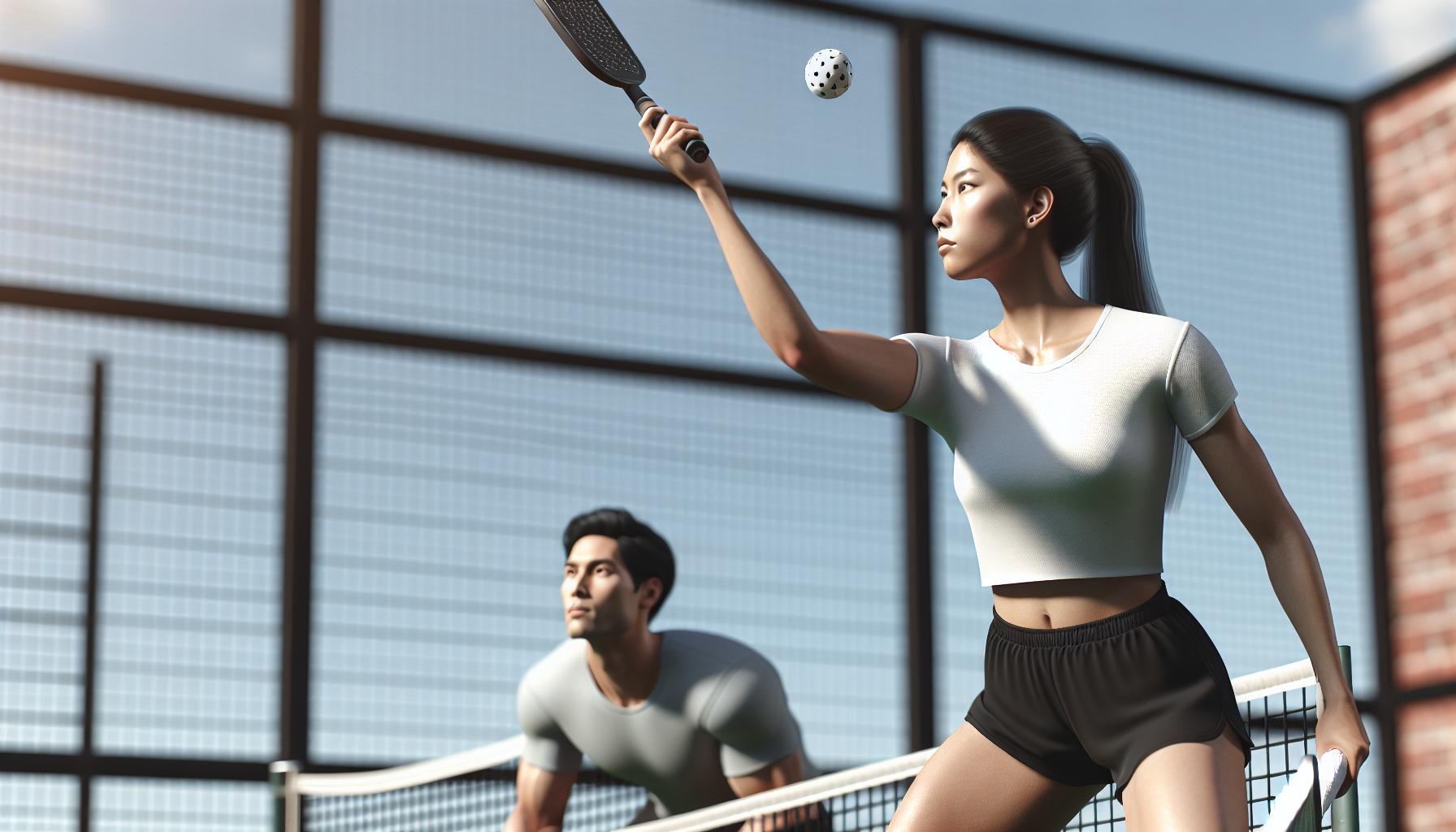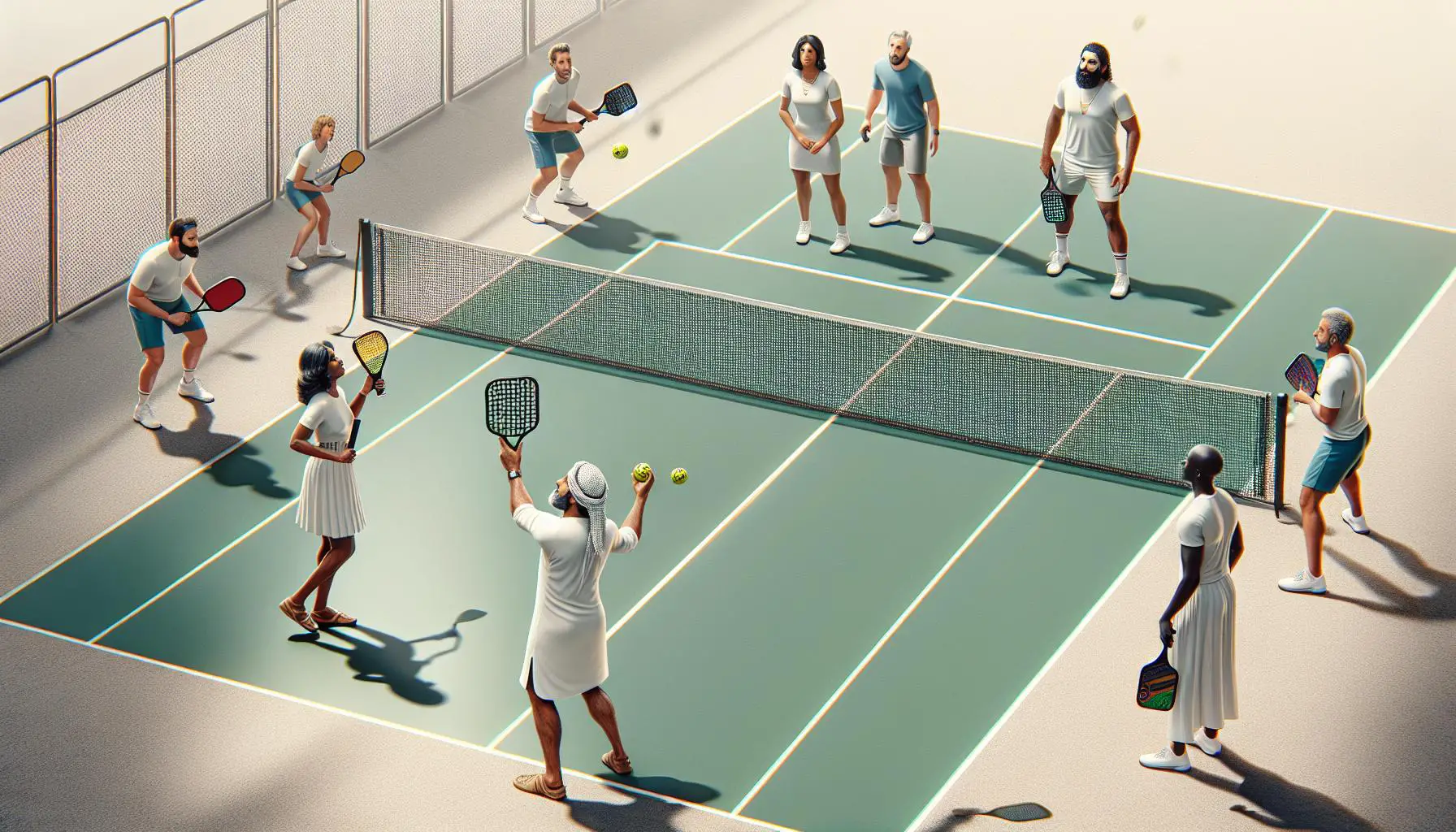Pickleball’s popularity is skyrocketing, and it’s no wonder why. This fun, fast-paced game is easy to learn but hard to master, especially when it comes to understanding its unique scoring system. If you’ve ever found yourself scratching your head over how points are scored, you’re not alone.
One key aspect that often puzzles newcomers is the concept of “side out” scoring. It’s a term borrowed from volleyball, but in pickleball, it plays a crucial role in the flow and strategy of the game. Let’s dive into what makes side out scoring so special and why it’s essential to mastering the game.
Overview of Pickleball Scoring System
Pickleball’s unique scoring system may seem intricate at first glance, especially to newcomers of the sport. However, once players get the hang of it, they find that the scoring method adds a strategic depth to the game. Understanding the fundamental rules of pickleball scoring is crucial for anyone looking to dive into the sport or improve their gameplay.
Pickleball is played either as singles or doubles, and the game starts with a serve. The key aspect to remember is that points can only be scored by the serving side, making each service game potentially pivotal to the outcome. This system encourages players to maintain a strong serve and defense strategy. The game is typically played to 11 points, and a team must win by at least two points.
One of the most distinctive features of pickleball scoring is the “side out” system. This means that serving privileges shift to the opposing team when the serving team commits a fault. It’s a twist that keeps players on their toes and emphasizes the importance of both offensive and defensive play. The side out scoring system allows for dramatic comebacks and maintains a dynamic balance of power throughout the game.
The process of calling the score in pickleball is unique as well. The server must call out three numbers before each serve: the serving team’s score, the receiving team’s score, and, in doubles, the server number (1 or 2). For example, if the serving team has 5 points, the receiving team has 3 points, and it’s the first server, the call would be “5-3-1.” This method of score calling ensures all players, including spectators, are aware of the game’s status.
It’s worth noting that understanding and mastering the pickleball scoring system, particularly the “side out” scoring, requires practice and experience. Players often spend significant time developing strategies that leverage the scoring system to their advantage. Whether it’s deciding when to play aggressively or defensively, the scoring system plays a crucial role in shaping the game dynamics.
- Points are only scored by the serving side.
- The game is played to 11 points, and a team must win by 2 points.
- The “side out” system shifts serving privileges to the opposing team after a fault.
- The server announces the score in a three-part sequence: serving team’s score, receiving team’s score
Introduction to Side Out Scoring

In the fast-paced world of pickleball, mastering the scoring system can significantly boost a player’s chance of success. At the heart of this system lies the concept of “side out” scoring, a unique feature that sets pickleball apart from many other racket sports. Understanding how side out scoring works is essential for both new and seasoned players who aim to sharpen their strategic approach to the game.
Side out scoring primarily means that points can only be scored by the team or player serving the ball. This rule inherently emphasizes the importance of a strong serve and a solid defensive strategy to prevent the opponents from gaining the serve. Every time the serving side commits a fault—whether it’s a serve that lands out of bounds, a ball that doesn’t clear the net, or any other mistake that results in the loss of a point—the serve shifts to the opposing side. This transition of serving rights is what “side out” refers to.
The significance of this scoring system can’t be overstressed. It adds a layer of strategic depth to pickleball that encourages players to not only focus on their offensive capabilities but to develop a robust defense as well. Since gaining and maintaining the serve is crucial to scoring points and ultimately winning the game, players are often seen adopting strategies that can pressure the opponents into making mistakes, thus facilitating a “side out”.
Here are a few key components of the side out system:
- Service advantage: The side that serves holds the potential to score points, making the serve a powerful tool in the game.
- Strategic depth: Teams need to balance between aggressive plays to win points and cautious strategies to avoid faults.
- Comeback potential: The side out system allows for dramatic comebacks, as the loss of serve by the leading team can quickly turn the tables.
This scoring method emphasizes that every rally carries weight, and no lead is completely safe until the game is won. The spectacle of watching teams tactically duel for control of the serve, hence the opportunity to score, adds an extra layer of excitement for both players and spectators alike.
How Side Out Scoring Works

In pickleball, understanding the side out scoring system is crucial for both players and spectators alike. This scoring method is distinctive because points are only awarded to the serving team. When the serving team makes a fault, such as a ball out of bounds or a service into the net, the right to serve shifts to the opponent, marking a “side out”. It’s a system that heavily rewards precision and strategy over sheer force.
Initially, at the start of the game, the serving team has a golden opportunity to rack up as many points as possible before committing a fault. Each serve acts as a gatekeeper to earning points, making the serve not merely a way to start play, but a strategic tool in itself. The team on the receiving end cannot score points directly; they must first successfully defend the serve and then win the rally to cause a side out, thereby earning the chance to serve and score points.
Rally Scoring vs Side Out Scoring
It’s worth contrasting side out scoring with rally scoring, a system where points can be won regardless of which team serves. In rally scoring, games can progress quickly, with every point having the potential for a change in score. However, side out scoring introduces a deeper layer of strategy. Teams must balance aggression with caution, knowing that any fault while serving shifts the momentum to their opponents.
Here’s a brief overview of how a traditional game would progress under side out scoring:
- Team A starts as the serving team.
- Team A scores a point if they win the rally.
- If team A commits a fault, a side out occurs, and Team B gets the serve.
- Team B can now score points until they commit a fault.
This back-and-forth continues until one team reaches the predetermined number of points needed to win the game.
The Importance of Service Strategy
Given the scoring dynamics, teams often craft their gameplay around optimizing their service and return strategies. A well-placed serve can put the opposing team under immediate pressure, increasing the chances of a fault and gaining a valuable point. Conversely, mastering the art of returning serves is equally important. Teams that excel in both serving strategically and returning serves skillfully are often the most successful in pickleball.
| Aspect | Importance in Side Out Scoring |
|---|---|
| Serving Strategy | High |
| Return Strategy | High |
Importance of Side Out Scoring in Pickleball

Side out scoring is much more than a unique characteristic of pickleball; it’s a critical element that shapes how the game is played, influencing strategies and game dynamics. Unlike rally scoring, where points can be scored by either team regardless of who served, side out scoring restricts point scoring to the serving team only. This setup places immense importance on service and return plays, turning every serve into a crucial opportunity to gain an edge over the competition.
One of the most significant impacts of side out scoring is on player concentration and mental toughness. Since only the serving team can score points, players are often under immense pressure to maintain their serve. This pressure to perform can heighten the mental game, pushing players to develop not only physical skills but also mental resilience. The anticipation of a serve, knowing it could lead directly to a point, adds an exciting twist to gameplay, keeping both players and spectators on the edge of their seats.
Moreover, side out scoring encourages strategic depth. Players must constantly adapt their strategies based on the current server, their position, and the score. Strategic planning, including serve placement and the decision between a power shot or a more finessed return, becomes essential. Teams often spend considerable time analyzing their opponents’ weaknesses to exploit them during their serve, aiming to maximize their scoring opportunities before a fault occurs and the serve shifts.
In team play, communication and coordination become even more vital under side out scoring. Teammates need to be in perfect sync, understanding each other’s movements and strategies without needing to communicate loudly on the court. This silent understanding can significantly impact the game, allowing for smoother transitions between shots and more effective doubles play.
The emphasis on service in side out scoring also introduces a unique rhythm to the game. Players and teams must be adept at quickly switching between offensive and defensive modes based on the serve. This dynamism ensures that pickleball games are never monotonous, providing a vibrant and engaging experience for players of all levels.
| Aspect | Impact of Side Out Scoring |
|---|---|
| Strategic Depth | Requires constant adaptation and strategic planning based on the server and team dynamics. |
| Mental Toughness | Heightens the mental game by placing pressure to maintain the serve. |
| Communication & Coordination | Essential for team play, impacting game success. |
| Game Rhythm |
Strategies for Success in Side Out Scoring

In the high-paced game of pickleball, mastering the art of side out scoring is pivotal for a player’s success. This system not only emphasizes the value of each serve but also highlights the need for strategic gameplay and mental agility. To navigate the nuances of side out scoring, players adopt various strategies that boost their chances of winning.
One of the primary strategies revolves around effective serving. Since only the serving team can score, earning the serve back quickly is essential. Players focus on delivering serves that are difficult to return, such as those that are deep in the court or close to the sidelines. This forces the receiving team into a defensive position from the start, setting up the server for an offensive play.
Strategic placement of returns is another crucial technique. Whether it’s a serve return or a volley, placing shots where opponents are not, or where they have difficulty reaching, increases the likelihood of gaining the serve. Players often aim for the backcourt to push their opponents away from the net or target the no-volley zone to pull them forward, creating opportunities for more aggressive plays.
Team coordination cannot be overstated in doubles play, where successful side out scoring often hinges on seamless communication and movement between partners. Teams work on:
- Identifying each other’s strengths and weaknesses to cover more ground efficiently.
- Developing signals for quick and silent communication during plays.
- Practicing synchronized movements to avoid gaps in defense and to set up for strong offensive shots.
Adaptability also plays a significant role in a team’s success under the side out scoring system. Players must be keen observers, quickly identifying patterns in their opponents’ play styles and adjusting their strategies accordingly. This might involve switching serving styles, altering the pace of the game, or even changing positioning to disrupt the opponent’s rhythm. Being able to adapt mid-game requires both mental and physical flexibility.
Lastly, maintaining a strong mental game is as critical as physical skills. Since side out scoring can lead to rapid changes in momentum, players work on mental toughness to stay focused and resilient, regardless of the scoreboard. They practice staying calm under pressure, maintaining a positive mindset, and communicating encouragement to teammates.
Conclusion
Mastering side out scoring in pickleball isn’t just about getting the basics right. It’s about weaving together a tapestry of skills that includes effective serving, strategic shot placement, and unwavering team coordination. But more than that, it’s the mental game that often decides who walks off the court victorious. Players who can adapt quickly and stay mentally tough, even when the momentum shifts, are the ones who excel. So next time you’re on the court, remember it’s not just about how you play the game but also how you think it.














0 Comments